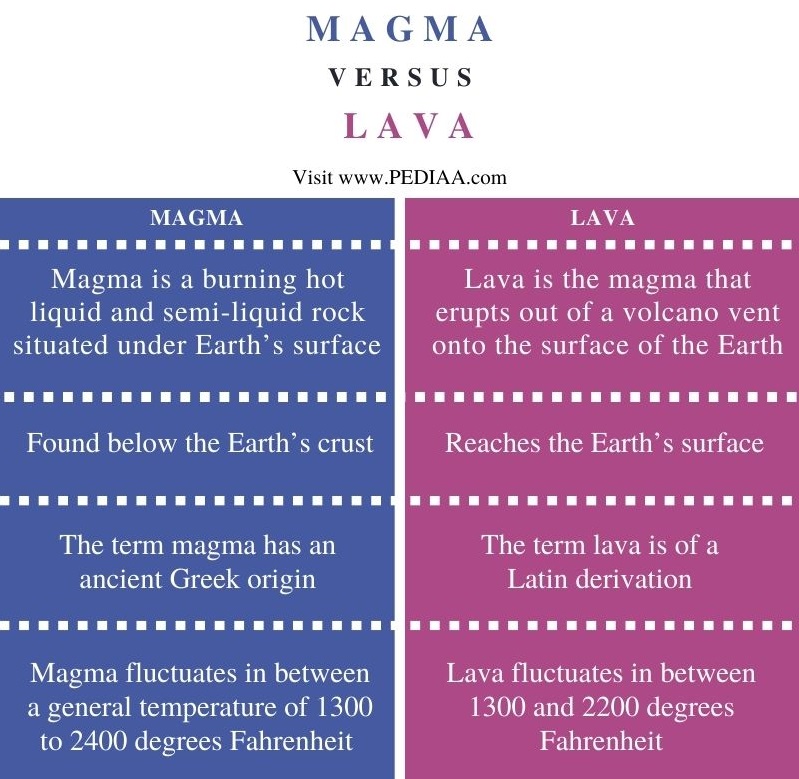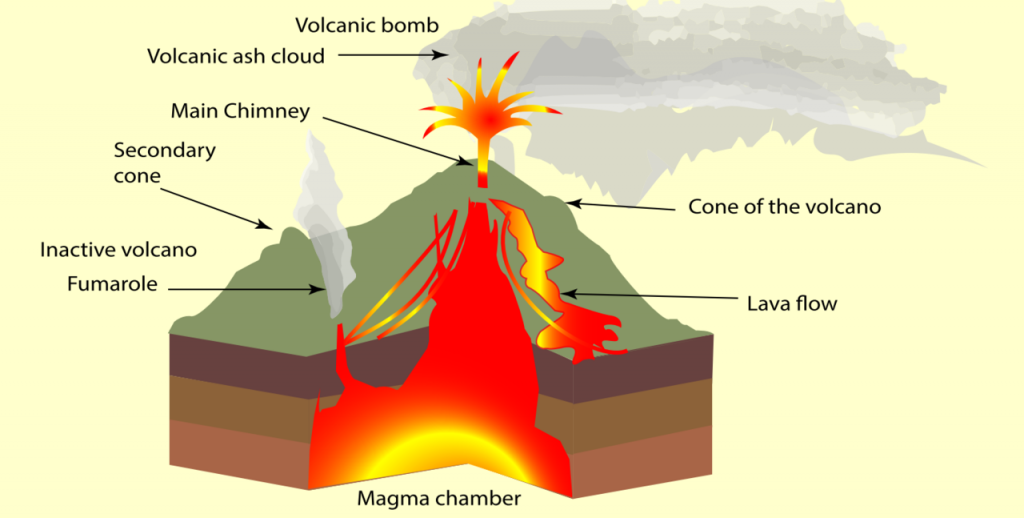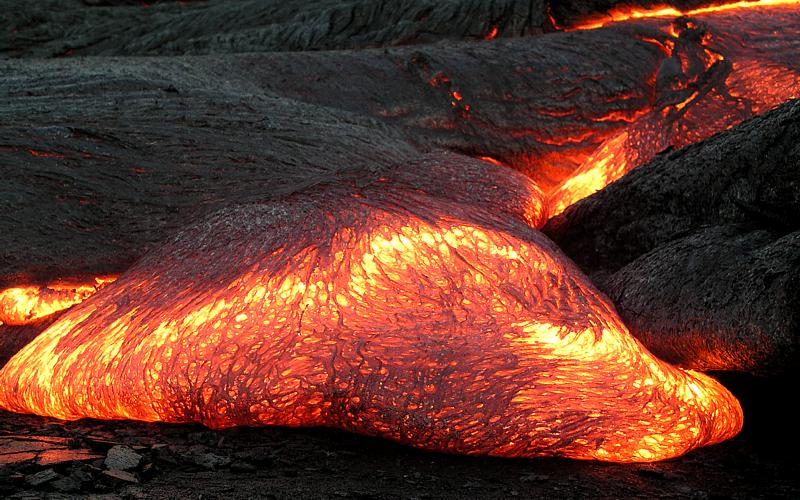What Is Magma And Lava
The principal deviation betwixt magma and lava is that magma is equanimous of molten rock and is stored in the World's crust, while lava is the magma that reaches the surface of Earth through a volcano vent.
Simply put, magma is an extremely hot liquid and semi-liquid stone located under Earth's surface. When magma flows onto Globe's surface, we call it lava.
Primal Areas Covered
one. What is Magma
–Definition, Features
2. What is Lava
–Definition, Features
3. Similarities Between Magma and Lava
–Outline of Mutual Features
4. Departure Between Magma and Lava
–Comparison of Key Differences
Key Terms
Andesitic magma, Basaltic magma, Lava, Magma, Rhyolitic magma, Volcano

What is Magma
Magma refers to an extremely hot liquid and semi-liquid rock situated under Earth's surface. Earth is structured into four layers: inner core, outer cadre, pall, and chaff. The mantle layer by and large consists of magma. This magma pushes through holes and cracks in the Earth's crust, resulting in a volcanic eruption.

Magma is a combination of minerals, which also include small amounts of dissolved gases like carbon dioxide, sulfur, and h2o vapour. Magma remains in its liquid land due to the high temperatures and the pressure level under the Earth's crust. Generally, when magma flows on to Globe's surface through a volcanic vent, its viscosity influences the shape of the volcano. If magma is extremely gluey, volcanoes with steep slopes are formed. On the other hand, less viscous magma results in the formation of comparatively flatter volcanoes.
There are three main types of magma chosen Basaltic magma, Andesitic magma, and Rhyolitic magma. Each one of them has a unique mineral composition. All the same, all three types of magma contain a high content of silicon dioxide in varying percentages. When compared to the other two types, Basaltic magma is rich in atomic number 26, calcium, and magnesium. Yet, its potassium and sodium percentages remain depression. Andesitic magma possesses minerals in moderate amounts, and Rhyolitic magma has a higher content of potassium and sodium but a lower percentage of magnesium, calcium, and atomic number 26.
What is Lava
Lava is the magma that flows or erupts onto Earth's surface through volcanic vents. This molten stone mixture flowing downhill, glowing in a brilliant orange color among all the deep blackness smoke, is a visually mesmerizing scene.
Lava is extremely hot and cools downwards into deep black rocks reacting with the airflow. Lava has the capacity to reach a temperature of ane,250° Celsius. Nevertheless, the average lava temperatures rise up to 750° Celsius, which is still a lot hotter than the maximum temperature your kitchen oven is capable of reaching.

Lava is a composition of silicon, oxygen, iron, magnesium, potassium, calcium and more than. These minerals react nether the Earth's surface and sometimes produces crystals such as olivine, which is a cute yellow-dark-green crystal we normally call "peridot". Just, information technology is very hard to spot crystals on a lava stone which is usually dark greyness, every bit these rocks reach the surface through volcanic vents before the mineral elements could turn into crystals below the ground.
Similarities Betwixt Magma and Lava
- Lava and magma are exactly the same molten rock, except for the fact that magma is underground and lava is the magma that erupts onto Earth'south surface.
- Therefore, their mineral limerick is the same.
Difference Betwixt Magma and Lava
Definition
Magma is a burning hot liquid and semi-liquid rock situated nether Globe's surface while lava is the magma that erupts out of a volcano vent onto the surface of the Earth.
Location
Magma is found below the Earth's chaff, whereas lava reaches the World's surface.
Origin of Terminology
The term magma has an ancient Greek origin, while the term lava is of a Latin derivation.
Temperature
Magma fluctuates in between a general temperature of 1300 to 2400 degrees Fahrenheit while lava fluctuates in between 1300 and 2200 degrees Fahrenheit.
Conclusion
In cursory, magma is the molten rock that is underneath the Earth'due south surface. When the magma shoots out of the volcano's crater onto the surface of the world, it is referred to as lava. Thus, this is the main departure between magma and lava.
Reference:
1. "Volcanic Eruptions." IFRC.
Image Courtesy:
1. "Volcanic mountain" By Rajneesh kumar Thakur – Ain work (CC Past-SA 4.0) via Eatables Wikimedia
2. "Pahoehoe toe" Past Hawaii Volcano Observatory (DAS) – (Public Domain) via Commons Wikimedia

What Is Magma And Lava,
Source: https://pediaa.com/what-is-the-difference-between-magma-and-lava/
Posted by: kingrepasustem.blogspot.com


0 Response to "What Is Magma And Lava"
Post a Comment